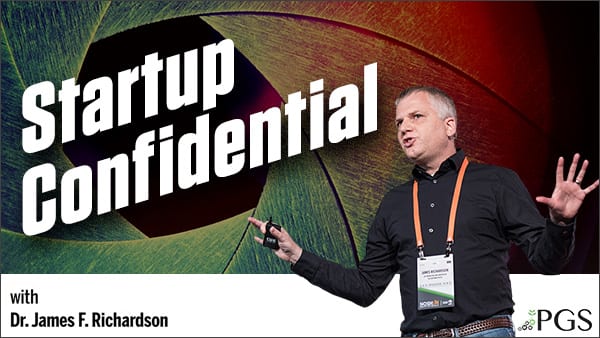PODCASTS / E45

Ep. 45 Competitive Strategy Formulation for Exponential Growth
MAY 1, 2021
In the early years of scaling up initial operations, it can be hard to pay much attention to competition, except when buyers keep shoving the issue in your face: “You’re not incremental to my set, sorry.”
That’s the buyer’s way of telling you that they think you’re not competitive.
But, I’d caution you to define competition from the consumer’s perspective, not a merchandiser’s desk. Please.
Why? Long-term, you’re competing for memorability in consumer’s minds. The ocean of forgettable startup brands on merchandiser’s shelves actually don’t matter, even if they paid for shelf space. If they’re not growing or growing velocities, you can still beat them.
Competing is about seducing consumers with your modern twist on broad, cultural outcomes relevant to your category right now (e.g., hydration, satiety, skin hydration, etc.)
Design a highly focused, premium-priced offering and channel it to the consumers most predisposed to rapidly become heavy users (i.e., buying in bulk weekly or monthly). If your design and initial incubation lead to something that generates lots of word-of-mouth (yes, you can measure this) right away, it will reflect quickly in velocity growth at the same stores.
After you get through Phase 1 or past $500,000 in trailing annual sales on your books, it’s time to get more serious on your 4P playbook. This is really where competitive strategy goes to another level.
Your UPC mix and its attribute-outcome symbolism is your foundation. But, you have to find a competitively advantaged playbook to pursue that strategy in order to grow without fighting by the rules of the major incumbent brands. You are not General Mills or Pepsi. You probably aren’t a Series D financed startup either. Not yet, at least.
It could be 2-3 elements in a complex 4P mix of execution wherein you gain unusual advantage in driving quality trials.
The storytelling theater of event sampling will come back in some fashion as we get the population vaccinated. And it still remains a very powerful accelerant throughout the 4 phases of early-stage growth.
SkinnyPop used massive visual displays and early roll-out of large pack sizes in Club to accelerate habitual consumption among educated consumers interested in preventing weight gain more than generating weight loss.
KIND Bar used sampling and a uniquely transparent pack design to highlight the symbolic power of their product’s visual appearance in an ocean of soy protein isolate pressed goop bars.
The point is not to copy some unrelated Skate Ramp brand’s playbook mindlessly. And it’s not to be artistically original either.
Just find a 4P mix that orients to accelerated trial of the right consumers and one that your best-funded, high potential competitors aren’t using. And one they are very unlikely to use because you know they’ve overcommitted to a different mix. The last one is important and requires you to spend time observing your competitor’s moves in-store and out of the store.
And then crush your execution on your playbook mix as if your life depends on it until KPIs suggest you need to iterate. Often, you simply run out of your early geeks and need to find broader audiences.
You’ll outperform other founders relying purely on account stacking or those trying to excel on every executional touchpoint, when, in reality, this is not possible unless you are BigCo ( or an overstaffed startup).
You have to build a strategy and playbook anchored in tapping consumer behavior, even latent behavioral impulses awaiting your innovation.
To know if this magic is happening, you have to pace your growth so that you are not chasing scale. Doubling every year off of a small base allows you to do this. It allows you time to build e-mail lists, SMS followings, social followings, interact with fans, isolate weak spots, explore tactics to drive memorability, etc.
Every quarter I bring a new cohort through my Riding the Ramp online training seminar. This two-hour event includes 30 minutes of free Q&A.